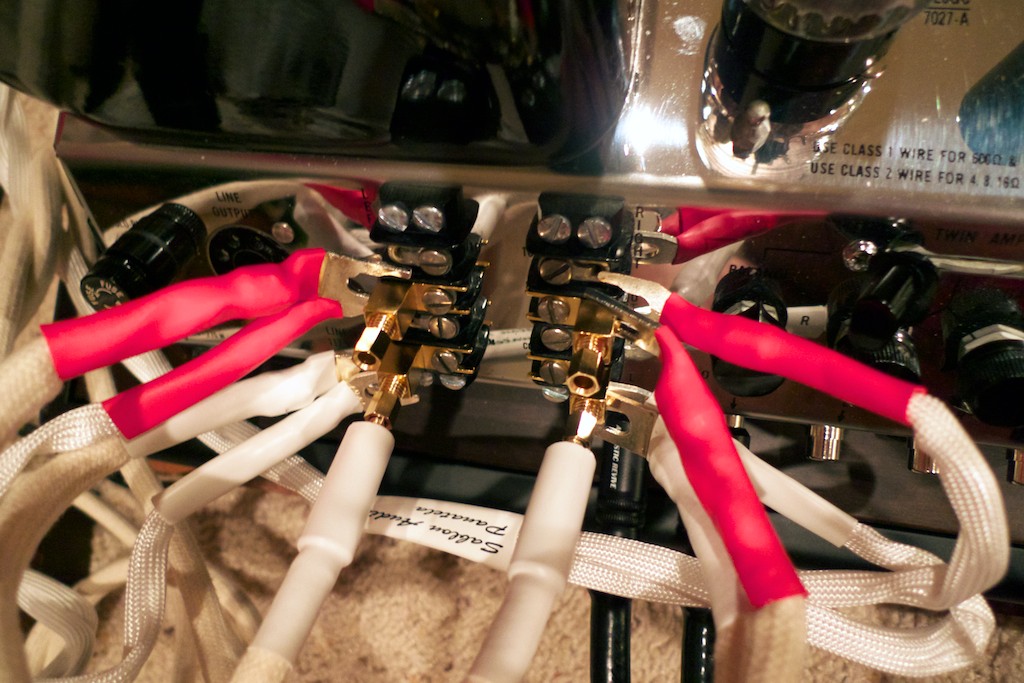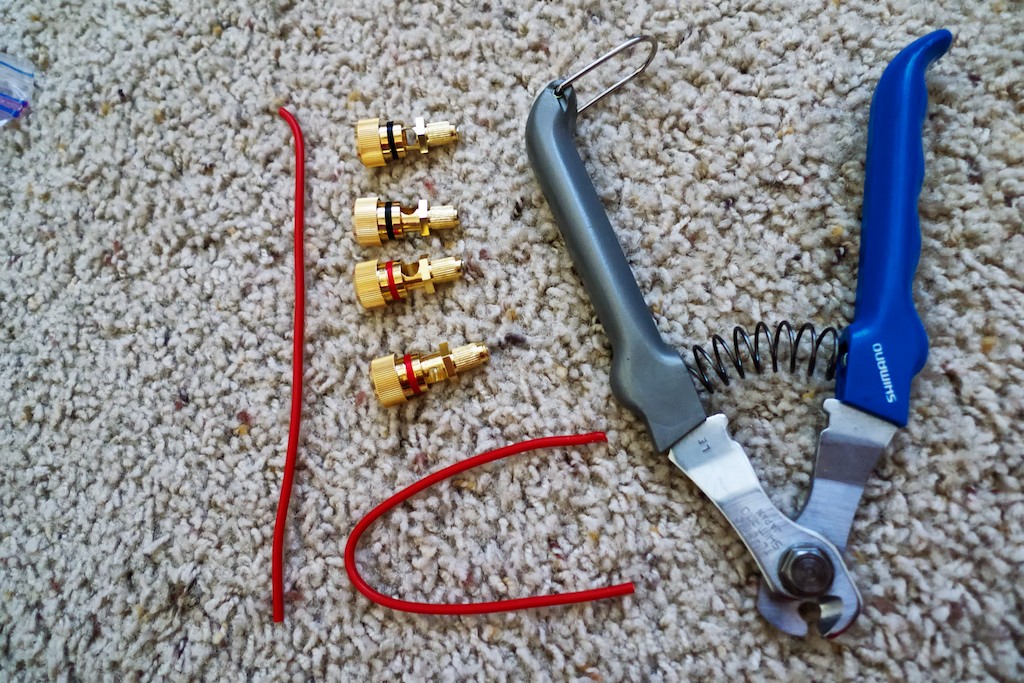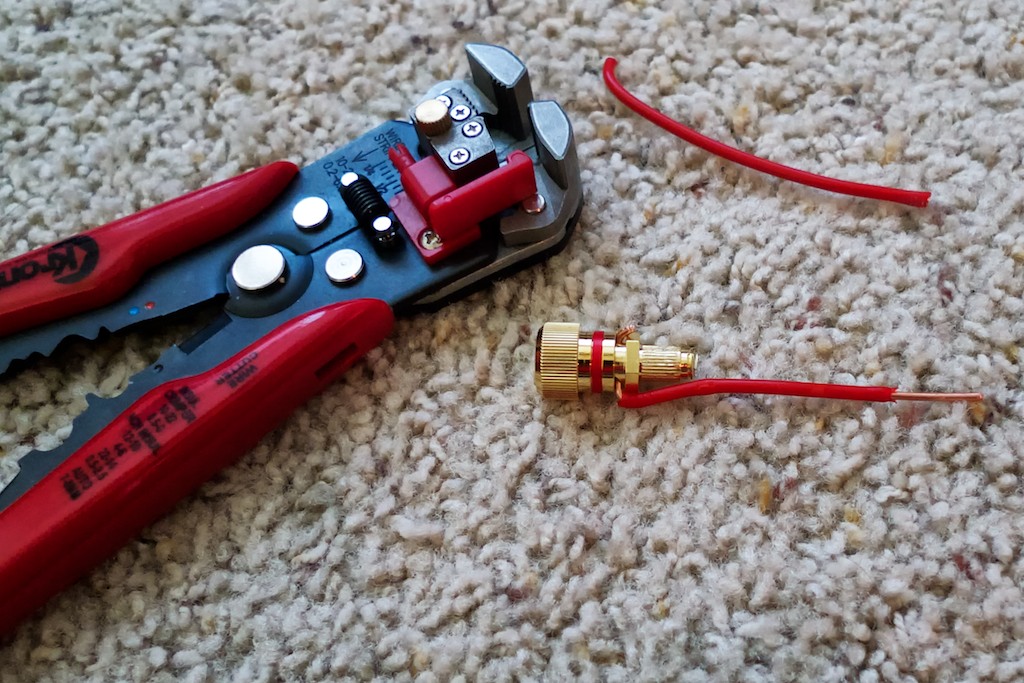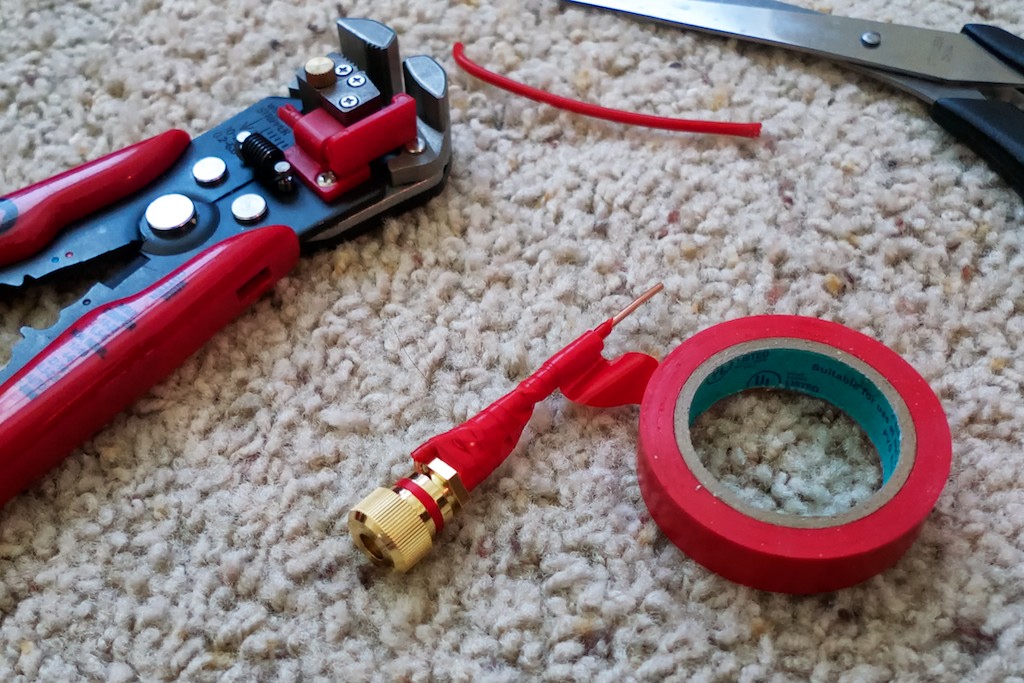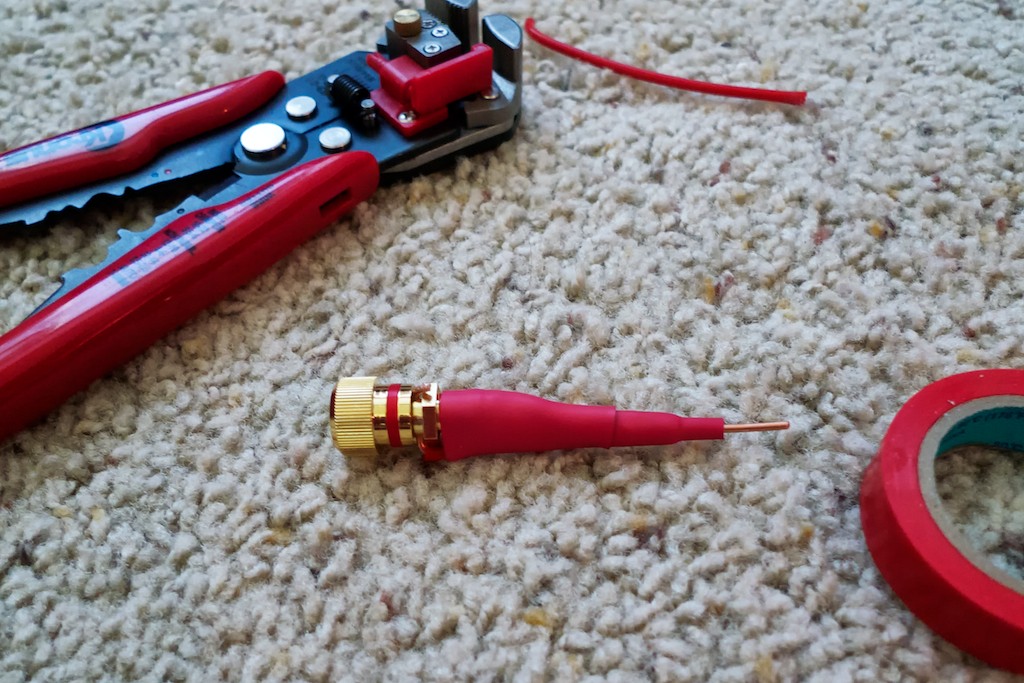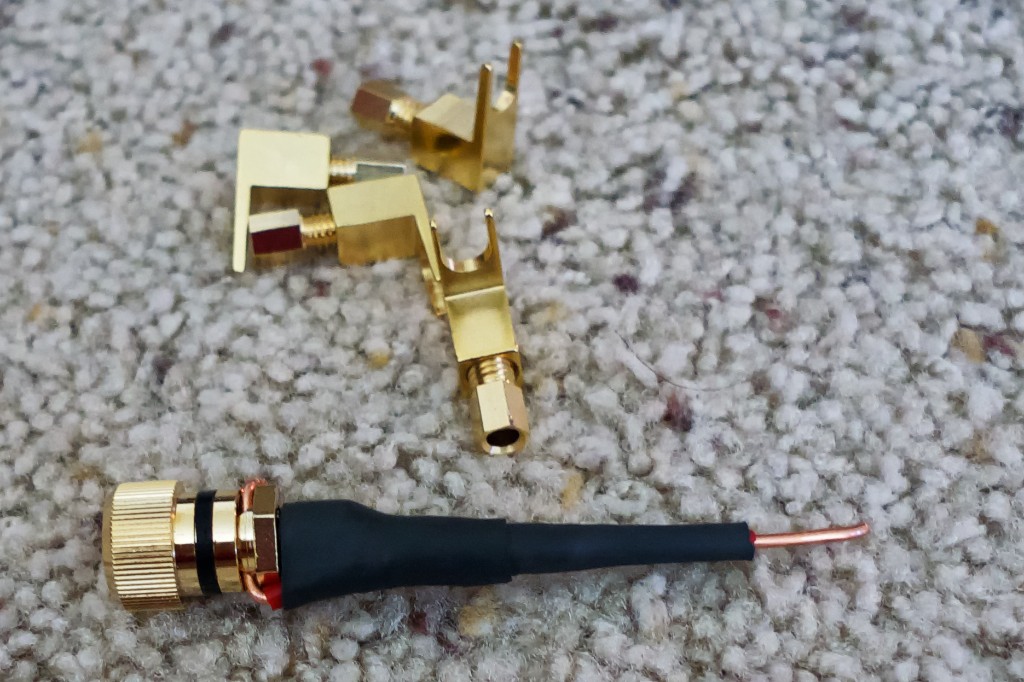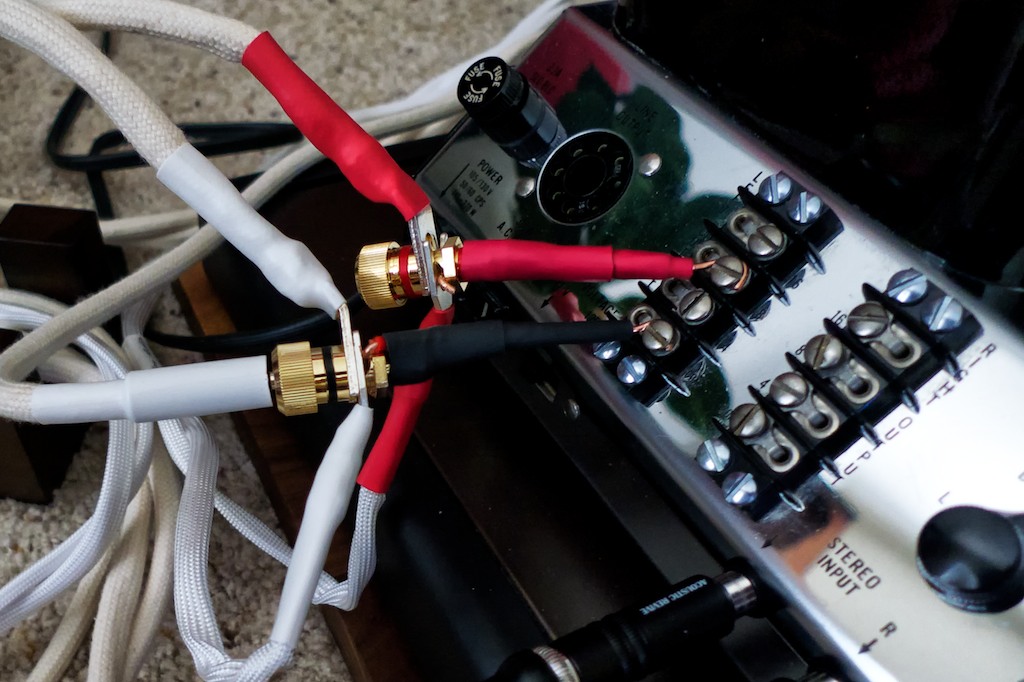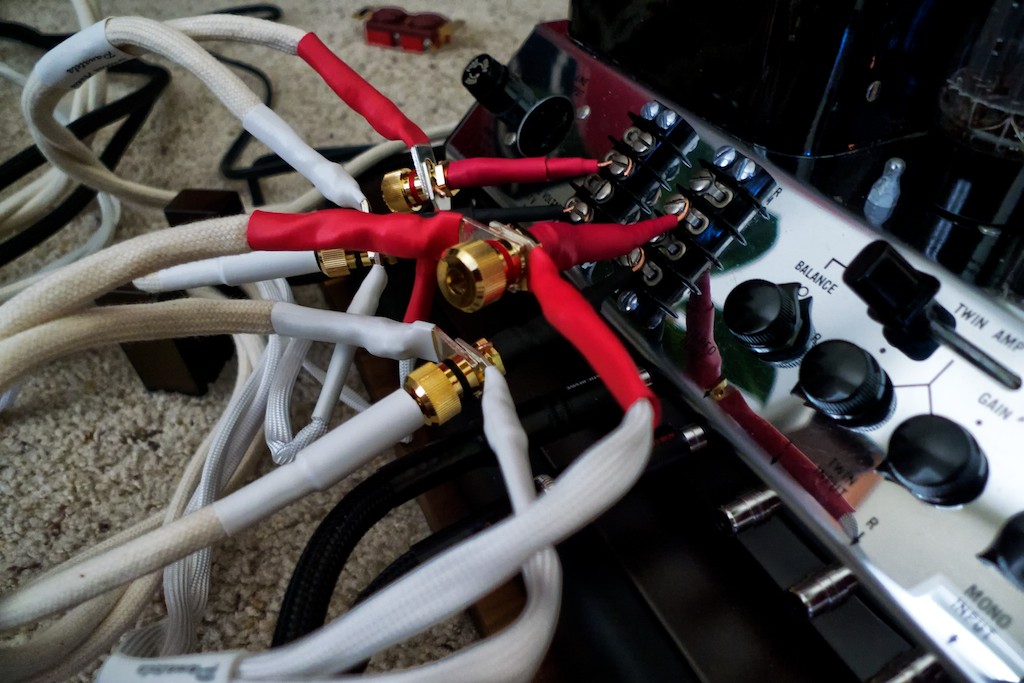Yesterday I posted in Today's Fresh Catch about the spade terminal adapters for vintage McIntosh amplifiers with terminal strips that I found and purchased on eBay. While the price was right at slightly less than $10 USD, the performance and design of the adapters was not really up to what I wanted for use with the ultra-performing Sablon Audio Panatela speaker cables and interior wiring for the Westminster Royal SEs. It's pretty silly to compromise the über Panatelas with $10 adapters, so I knew I needed to rethink my approach.
Somewhat embarrassingly, I had attributed the degradation of the sound quality caused by the adapters to another component in the system that was not at fault, so I'm glad I figured out what was going on in time to remedy the situation.
I decided to try a variation on the binding post bypass approach that I used for the Duelund-WRSE Project crossovers (see the archive links), and I'm happy to report it turned out to be a remarkably good sounding solution, so I wanted to share the details with you in case you might benefit from the approach on a pair of your vintage amps.
In the photo below you can see the inexpensive Dayton Audio BPA-38G HD binding posts that I used for the binding post bypass in the Duelund-WRSE Project crossovers.
The Dayton binding posts are unnecessarily long for this application so I snipped the mounting bolt off to shorten things up with my handy Shimano cable tool that I use for cycling applications.
In the photo above you can also see the few inches of Neotech 14 gauge copper UP-OCC mono-crystal design hook-up wire I had left over from wiring the low-frequency section of the Duelund-WRSE crossovers that I used in making the binding post bypass adapters for the MC240. I was astonished at how much better sounding the Neotech was than the generic hookup wire that I had tried earlier.
After cutting my leftover Neotech into four equal lengths, I stripped of the ends and inserted it into the modified Dayton binding post. (above)
Then I wrapped the Neotech wire and Dayton binding post with Peavey microphone tape to secure the Neotech wire in place. (below)
To finish the binding post bypass adapters I covered the Peavey tape and wire with color-code shrink-wrap tubing. (below)
If you look closely below, you'll see the details of the completed binding post bypass adapter on the McIntosh MC240. The Neotech wire end is inserted into the MC240's terminal strip with the set-screw securing it in place. The silver spade connectors of the Panatela speaker cables are clamped directly to the Neotech wire that is connected to the terminal strip for the purest connection possible.
I repeated the process for the other binding post bypass adapters ...
Here's the right channel all connected ... notice the ground connection from the Tannoy Dual Concentric driver (banana connector) inserted into the end of the binding post bypass adapter.
Below is the completed set of binding post bypass adapters with five-wire Panatela speaker cables in place.
Admittedly, it looks a little busy with the five-wire Panatela component speaker cables mounted on the binding post bypass adapters, but the sound quality is astonishingly good, so a little busyness can be forgiven.
If you're wanting an ultra-quality sounding adapter for your vintage amps' terminal strip, you'll be hard pressed to find something better than the binding post bypass adapters with the Neotech wire, I'd wager. Highly recommended!
Thanks for stopping by!




